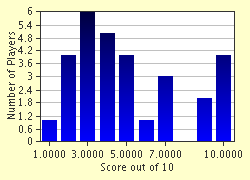Quiz Answer Key and Fun Facts
1. Despite Romania's name meaning "citizen of Rome," Bucharest was only briefly part of the Roman Empire in the 4th century during the reign of which emperor?
2. Bucharest is named after its legendary (although unproven) founder, Bucur. Bucur is said to be a shepherd, but it is unlikely that he had that occupation for what historical reason?
3. The first mention of the name Bucharest can be found in correspondence in 1459 written by which infamously cruel prince who built a summer home in the city?
4. Once the Ottomans invaded Bucharest and removed Mircea Ciobanul from power in 1554, the city saw an extended period of peace time, a stark contrast the usual violence it had experienced.
5. During his reigns from 1775-1782 and 1796-1797, Alexander Ypsilantis (1725-1805) introduced structural and economic improvements to Bucharest as it started emerging as a powerful city in the region. But which ruler brought social and cultural changes, such as arts and theater, to Bucharest in the early 19th century?
6. On March 23, 1847, the Great Fire of Bucharest destroyed more than a third of the city. Which best describes the neighborhood where the fire started and received the most damage?
7. Who is the Domnitor, a Romanian prince and ruler of Wallachia, who was overthrown in a coup in Bucharest on February 22, 1866 after he pushed land reform, angering many property owners?
8. When Bucharest was occupied by the Central Powers during World War I, to what city did the government temporarily relocate to?
9. What were the "hunger circuses" set up by Nicolae Ceausescu during his Communist regime starting in 1967 and lasting until 1989?
10. Which group of people initiated the Golaniad Protest in 1990?
Source: Author
Joepetz
This quiz was reviewed by FunTrivia editor
bloomsby before going online.
Any errors found in FunTrivia content are routinely corrected through our feedback system.

